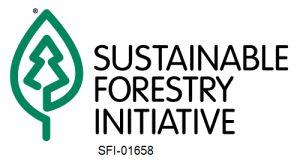Watershed Protection
Watershed protection and water quality maintenance are primary goals during both planning and operational stages. Watershed protection standards and guidelines have been defined for road construction and harvesting activities. They specify the requirements for establishing crossing structures, road locations, machine-free zones and stream buffers. Watercourses ranging from ephemeral draws with water flow only during periods of heavy runoff, to rivers and lakes, are classified for protection according to the provincial guidelines.
Site-specific assessments are completed before harvest plans are developed. The assessment information is used to plan access routes and boundary locations in order to minimize watershed disturbance. All operations are planned and conducted in compliance with provincial and federal regulations.
Wildlife
The foothill forests represent a range of habitat types supporting a variety of wildlife species. Harvest design planning must consider how habitat supply will be affected and how habitat could be maintained over time. Monitoring our operations in relation to wildlife requirements will allow us to adapt future harvest designs to better incorporate habitat needs.
Each successional stage of forest development is important. Open areas and young forests represent early stages of forest growth. Both are necessary to sustain many species of wildlife. Harvest patterns can be planned to help maintain the full range of forest age classes across the landscape.
Human access into the forest is considered to have the greatest impact on wildlife. We strive to limit the number of access routes we develop and deactivate roads as soon as possible following completion of operations.
Unique Features and Scarce Resources
Spray Lake Sawmills works to identify and protect unique resources within our planning areas. The first step is to identify and assess potential sites. Information on most sites is provided by government agencies or interested individuals. Sites may also be located during one of the company’s ongoing assessment processes.
Historic features, sites with archaeological potential, rare plants or plant communities and other unusual natural attributes are considered during planning and operations. The location of roads and harvest patterns are designed to avoid disturbing features that require protection.
Harvest Planning
Silvicultural Prescriptions
Silviculture systems are the prescribed strategic approaches recommended for harvesting timber and completing subsequent reforestation processes. Selected systems are chosen to match the biological needs of the tree species being harvested and the specific growing conditions of the harvest site.
Prescriptions must consider seasons of operation, species being harvested, available harvest methods, site preparation tactics, species to reforest and regeneration method. Harvest methods address felling patterns and the process of getting the timber to the roadside for hauling. Receptive sites to establish seedlings are created through site preparation, also known as scarification. Planting or seeding may accomplish reforestation. Spray Lake Sawmills relies on mechanical systems as their primary means of harvesting and site preparation.
Reforested areas are surveyed at several stages in their development. The surveys provide information on the success of the tactics and the growth of the new trees. Spray Lake Sawmills reforests all of the areas it harvests.



